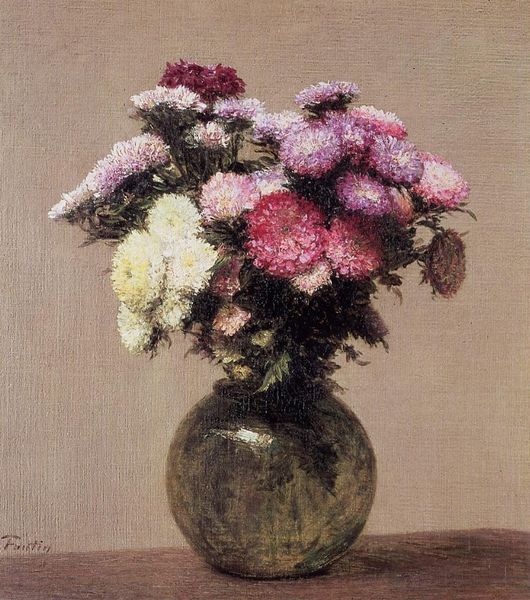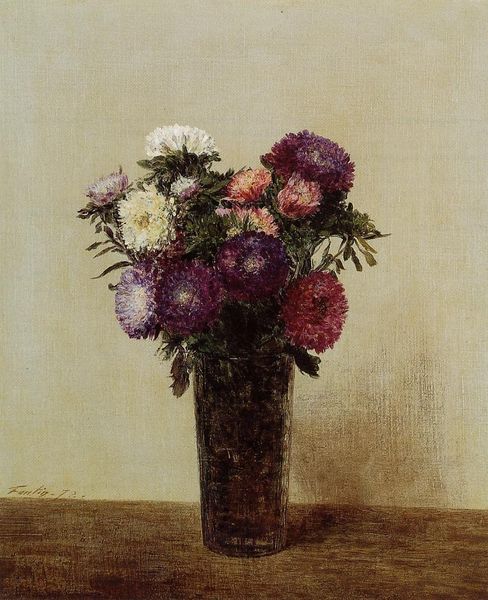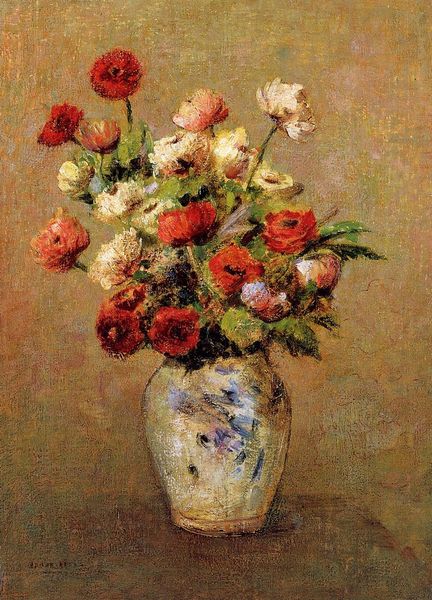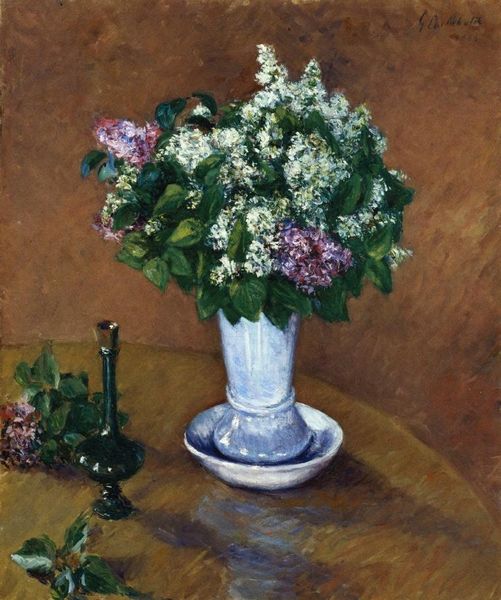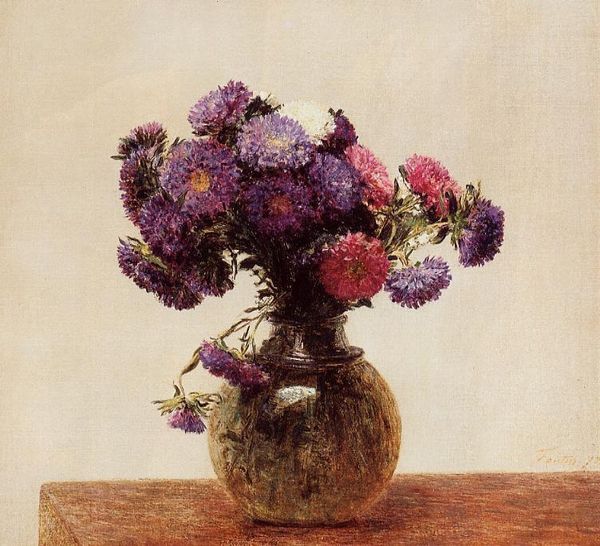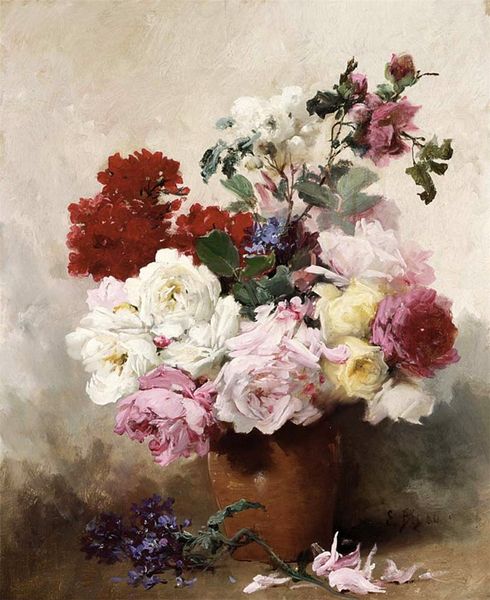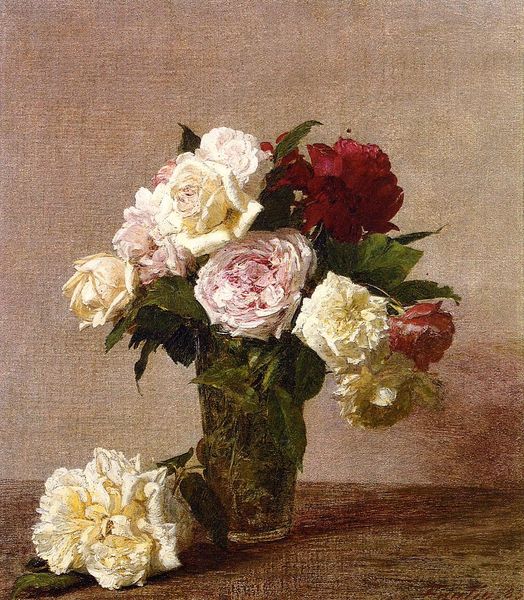
Dimensions: 58 x 59 cm
Copyright: Public domain
Editor: So, this is Fantin-Latour's "Asters in a Vase," painted around 1875. It's an oil painting, and there's something very grounded and present about it. What strikes me most is the tangible sense of the artist's hand – the visible brushstrokes, the way the light interacts with the texture of the paint itself. How do you interpret this work? Curator: For me, the power of this piece lies precisely in those "tangible" elements you mentioned. The labor involved in creating this isn't hidden; it’s showcased. Consider the sheer amount of paint required to build up those blooms, layer upon layer. How does the act of material accumulation itself contribute to the meaning? Editor: That's a good point. I hadn't thought about the sheer quantity of paint, like it's building volume as much as representing flowers. Curator: Exactly. And what about the vase itself? What is it made of? How was it made? Is it expensive or made using the material that anyone has access to. All these element contributes to it's beauty. These are choices on Fantin-Latour’s part. What might these choices be communicating about the relationship between art, material, and the viewer? Editor: Hmm, maybe it's a statement about accessible beauty? The flowers, rendered in such a way, almost democratize the act of appreciation. Curator: Possibly, or it might be commenting on the changing role of the artist in society. Fantin-Latour, by focusing on everyday subjects and making the labor visible, challenges traditional notions of artistic genius as something separate from ordinary life and materials. It is a shift in values where craft and art becomes less and less separated, not the artist creating some abstract, ethereal world. Editor: I see! It's not just about depicting a vase of flowers, but also about the artist's conscious choices related to materials and making, and what those choices mean within a larger social and cultural context. Curator: Precisely. Reflecting on the means of production reshapes how we view the artwork and where we place its value. The flowers become not just beautiful objects, but also symbols of changing social perspectives towards material and artistic production.
Comments
No comments
Be the first to comment and join the conversation on the ultimate creative platform.
